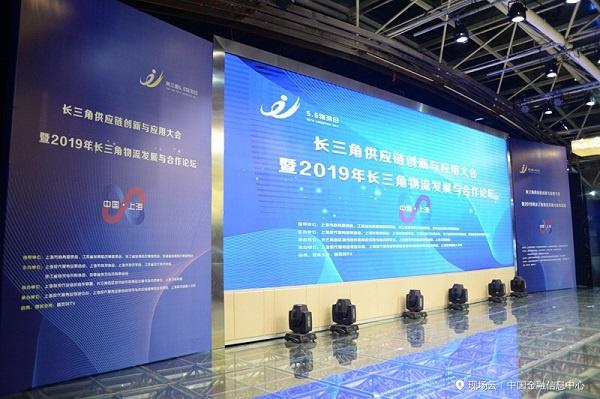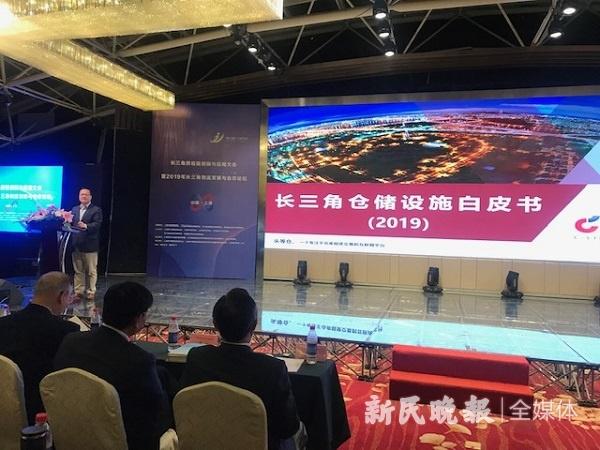Fund launched to boost supply chain innovation and application in YRD

The Yangtze River Delta supply chain innovation and application conference is held on May 6 in Shanghai. [Photo/xinmin.cn]
The Shanghai Free Trade Zone Equity Fund (FTZ Fund) announced the launch of a fund to support the innovative development of supply chains in the Yangtze River Delta (YRD) area, during an YRD supply chain innovation and application conference on May 6.
The fund was initiated by the FTZ Fund, air hub operators, air service providers, logistics giants in YRD, large commercial enterprises, and government guidance funds. It will have 2 billion yuan ($289.9 million) in its initial phase and will grow to a total of 10 billion yuan.
The new fund will mainly invest in rapidly-growing, high-quality modern supply chain platforms and smart supply chain tech companies, such as supply chain service and trading platforms, new retailing platforms, cross-border e-commerce and logistics platforms, and smart supply chain technology involving 5G, big data, cloud computing, AI, LoRa, and NB-lot, according to insiders at the FTZ Fund.
A number of public service platforms, including an Asia-Pacific demonstration e-port network operation center and movable property financing infrastructure at the Credit Information Center of the People's Bank of China, were unveiled during the conference.

A white paper on warehousing facilities in the YRD area is released at the Yangtze River Delta supply chain innovation and application conference on May 6 in Shanghai. [Photo/xinmin.cn]
In addition, a white paper on warehousing facilities in the YRD area was released. It noted that the warehouse space of five major cities in the YRD area has reached 120 million square meters, but high-standard modern warehouses only accounted for about 17 percent. The remaining 80 percent are non-standard.
About half of the warehouses are smaller than 10,000 square meters, and are scattered across the area. However, due to the increasing number of e-commerce and logistics companies, the vacancy rate of the warehouses is less than 8 percent.
A survey showed that 51 percent of inventory at Shanghai's warehouses are from the city and over 40 percent are from outside. About 53 percent of the commodities will be delivered to areas outside the city, which showed a two-way flow of cargo in Shanghai's warehouses.
In particular, the warehouses at Waigaoqiao, Pudong Airport and Lin'gang area are mainly for international trade, as 80 percent of the businesses are related to international goods.
Cai Jin, vice president of the China Federation of Logistics & Purchasing, said at the conference that a 2018 logistics statistical bulletin released this March reported the logistics revenue in 2018 totaled 283 trillion yuan, up by 6.4 percent, which shows the national economy's demand for logistics development is no longer about its size and speed, but its quality and benefits.
Cai also mentioned that the innovation of supply chains is not only related to lower costs, but also in creating new values. A growing number of logistics enterprises are working on integrating and optimizing resources of the entire industrial chain to build public service platforms of supply chains.
Meanwhile, technologies such as AI, big data, cloud computing, blockchain, 5G are applied in supply chain to promote its digitalization.
Smart supply chain targets unmanned scenarios such as unmanned warehouses, unmanned ports, drones, and driverless cars. Eventually, through the innovation of the supply chain, the integration of advanced manufacturing and modern service industries is promoted, said Cai.
 Contact Us
Contact Us

 Brilliant light show to illuminate Huangpu River
Brilliant light show to illuminate Huangpu River Maple leaves paint splendid scenery in Pudong
Maple leaves paint splendid scenery in Pudong Appreciate alluring lotus blossoms in Pudong's Century Park
Appreciate alluring lotus blossoms in Pudong's Century Park New pedestrian street boosts Pudong's night economy
New pedestrian street boosts Pudong's night economy 


